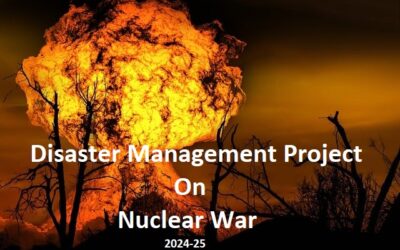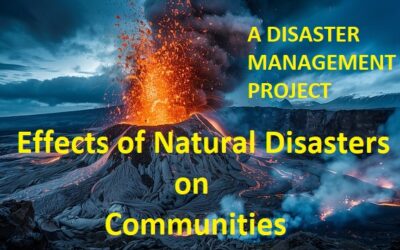Class IX Climate MCQs For Exam Preparation
Class IX – Climate MCQs, children will understand how climate is a complex of meteorological conditions. It is the sum total of weather conditions and variations over a large area for a long period of time. Class IX -climate MCQ’s chapter helps in understanding how the monsoons are the key to understanding the climate of India. Location and physio graphic factors have greatly influenced the climatic characteristics of the country. NATURAL VEGETATION AND WILDLIFE Class IX – Climate MCQ’s chapter also includes marine influences, due to the peninsular projections of the landmass into the Indian Ocean. In the class IX Climate, chapter children will learn how India is par excellence, a tropical monsoon country. This chapter is also important forhttps://shapingminds.in/ntse-ii-class-x-geography/ NTSE and other competitive exams.
Do you know that now there are not seven but eight continents? To know about the new continent click on the given link NEW EIGHTH CONTINENT – ZEALANDIA

CLASS IX CLIMATE MCQ’s FOR NTSE CHALLENGE
Class IX Climate MCQs For Exam Preparation
Q.1. Which among the following is an element of weather and climate?
a. atmospheric pressure
b. humidity
c. temperature
d. all of these
Q.2. In which months the transition of season takes place from the hot rainy to cold winter season.
a. October-November
b. February-March
c. June-July
d. December- January
Q.3. With which state is “Kaal Baisakhi” associated ?
a. West-Bengal
b. Orissa
c. Punjab
d. Kerala
Q4. In which state the houses are built on stilts
a. Punjab
b. Sikkim
c. Assam
d. Jharkhand
Q.5. Sub-Tropical high pressure belt is known as _______________
a. Doldrums.
b. Coriolis force
c. Horse latitudes
d. Terrestrial Radiation
Q.6. Mango showers helps in the ripening of___________
a) Apples
b) Mangoes
c) Grapes
d) Pineapples
Q.7. _____________________is an instrument used to measure the atmospheric pressure.
a. Thermometer
b. Hygrometer
c. Wind-vane
d. Barometer
Q.8. The difference between maximum and minimum temperatures of a day is called____________
a. Insulation
b. Terrestrial Radiation
c. Diurnal range of temperature
d. Annual range of temperature
Q.9. The average air pressure at the sea level is ……………… millibars
a. 1008.25
b. 1013.25
c. 1020.5
d. 1033.5
Q.10. Mawsynram is located in which of the hills?
a) Garo Hills
b) Jainita Hills
c) Khasi Hills
d) Shillong Hills
Class IX Climate MCQs For Exam Preparation
Q.11. The term monsoon originates from
a) German
b) Hindi
c) Latin
d) Arabic
Q12. The …………….. clouds are vertical clouds.
a. Cirrus
b. Nimbus
c. Stratus
d. Cumulus
Q.13. …………….. clouds are associated with rainfall, thunder and lightning.
a. Cirrus
b. Nimbus
c. Stratus
d. Cumulus
Q.14. The winds that blow from the sea contain________________ moisture.
a. Low moisture
b. High moisture
c. Moderate moisture
d. No moisture
Q.15. The major components of air are nitrogen and ________________
a. oxygen
b. hydrogen
c. helium
d. neon
Q.16. The ocean currents are one of the reasons for the origin and occurrence of
a. Hot deserts
b. cold deserts
c. plains
d. mountains.
Q17. The atmosphere of the Earth is surrounded by ___________-
a. dust
b. gases
c. water
d. forests
Q18. Equable climate is also known as ______________
a. continental type of climate
b. Maritime climate
c. Mediterranean type of climate
d. Humid climate.
Q19. Cotton like clouds are_______________
a. Cirrus
b. Nimbus
c. Stratus
d. Cumulus
Q20. Chinook blows in_____________
a. Australia.
b. Coastal regions of south America.
c. U.S.A.
d. United Kingdom
Class IX Climate MCQs For Exam Preparation
Q.21. Which one of the following warm ocean currents replaces the Peruvian cold currents?
a) Kuroshio
b) El Nino
c) South Pacific Currents
d) Gulf Stream
Q.22. Which is the coldest place in India?
a) Dras
b) Srinagar
c) Shimla
d) Jaipur
Q.23. Which of the following states suffer from loo?
a) Tamil Nadu
b) Uttar Pradesh
c) Gujarat
d) None of these
Q.24. What is the full form of ITCZ
a) International Tropical Convergence Zone
b) Interstate Tropical Convergence Zone
c) International Tropical Convergent Zone
d) Inter Tropical Convergence Zone
Q.25. The amount of ______________________ present in the atmosphere is called Humidity
a) Smog
b) Dust
c) Pollution
d) Water Vapour
Q.26 _________________type of rainfall is also called 4’O clock rainfall.
a. Monsoon
b. Orographic
c. Cyclonic
d. Convectional
Q.27. Which of the following forces is responsible for the deflection of winds from its normal path?
a) Centripetal Force
b) Coriolis Force
c) Applied Force
d) Gravitational Force
Q.28. During El Nino period, the temperature rises rapidly once in three to eight years along the coast of_____________
a. Peru and Equador
b. India and Pakistan
c. France and Spain
d. Japan and China
Q.29. Which one of the following causes rainfall during winters in north-western part of India?
a) Cyclonic depression
b) Western disturbances
c) Retreating monsoon
d) Southwest monsoon
Q.30. In ______________ Layer, the sun’s rays are ionized.
a. Troposphere
b. Stratosphere
c. Ionosphere
d. Exosphere.
Q.31. Which of the following areas is not an area of low precipitation?
a) Western parts of Gujarat
b) Leh in Jammu & Kashmir
c) Deccan Plateau
d) Assam
Q.32. Fast flowing and narrow air currents which blows in the upper layer of the atmosphere are called________________
a) Monsoon
b) Cyclone
c) Jet Streams
d) Anticyclone
Class IX Climate MCQs For Exam Preparation
ANSWER KEY:
1 d. all of these 2. a. October-November 3. a. West-Bengal 4. c. Assam 5. c. Horse latitudes 6. b) Mangoes
7. d. Barometer 8. c. Diurnal range of temperature 9. b. 1013.25 10. c) Khasi Hills 11. d) Arabic 12. d. Cumulus
13. d. Cumulus 14. b. High moisture 15. a. oxygen 16. a. Hot deserts 17. b. gases 18. b. Maritime climate
19. d. Cumulus 20. c. U.S.A. 21. b) El Nino 22. a) Dras 23. b) Uttar Pradesh 24. d) Inter-Tropical Convergence Zone
25. d) Water Vapour 26. d. Convectional 27. b) Coriolis Force 28. a. Peru and Ecuador 29. b) Western disturbances
30. c. Ionosphere 31. d) Assam 32. c) Jet Streams
FOR CLASS IX STUDENTS USEFUL LINKS ARE GIVEN BELOW. YOU MAY BE INTERESTED IN
PHYSICAL DIVISIONS OF INDIA – CLASS IX
अक्षांश (LATITUDES) और देशांतर (LONGITUDES) रेखाएँ :
NATURAL VEGETATION AND WILDLIFE
DISASTER MANAGEMENT PROJECT – COMPLETE GUIDANCE




0 Comments